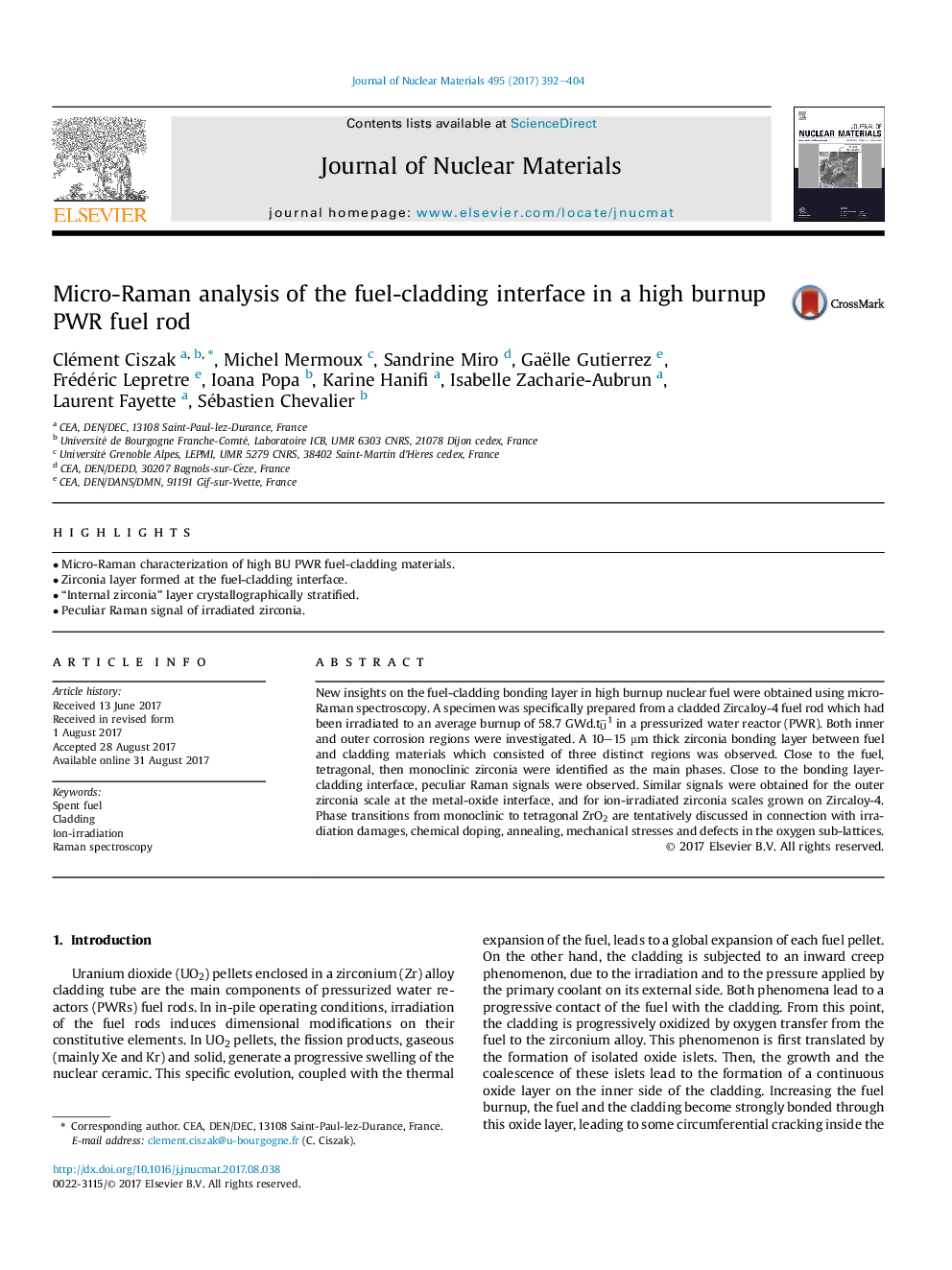| Article ID | Journal | Published Year | Pages | File Type |
|---|---|---|---|---|
| 5453866 | Journal of Nuclear Materials | 2017 | 13 Pages |
Abstract
New insights on the fuel-cladding bonding layer in high burnup nuclear fuel were obtained using micro-Raman spectroscopy. A specimen was specifically prepared from a cladded Zircaloy-4 fuel rod which had been irradiated to an average burnup of 58.7 GWd.tUâ1 in a pressurized water reactor (PWR). Both inner and outer corrosion regions were investigated. A 10-15 μm thick zirconia bonding layer between fuel and cladding materials which consisted of three distinct regions was observed. Close to the fuel, tetragonal, then monoclinic zirconia were identified as the main phases. Close to the bonding layer-cladding interface, peculiar Raman signals were observed. Similar signals were obtained for the outer zirconia scale at the metal-oxide interface, and for ion-irradiated zirconia scales grown on Zircaloy-4. Phase transitions from monoclinic to tetragonal ZrO2 are tentatively discussed in connection with irradiation damages, chemical doping, annealing, mechanical stresses and defects in the oxygen sub-lattices.
Related Topics
Physical Sciences and Engineering
Energy
Nuclear Energy and Engineering
Authors
Clément Ciszak, Michel Mermoux, Sandrine Miro, Gaëlle Gutierrez, Frédéric Lepretre, Ioana Popa, Karine Hanifi, Isabelle Zacharie-Aubrun, Laurent Fayette, Sébastien Chevalier,
